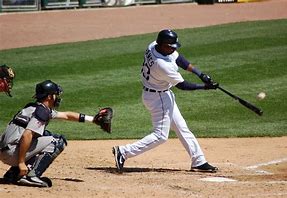Did you know: In 1900,”Honus” Wagner, one of the early and yet great players of all time, became the very first player to be paid to have his autograph burned into the Louisville Slugger bat.
Getting your player the proper bat is critical to their ability to adequately hit the ball. There are so many lengths and weights, so how in the world do you know which bats to get?
There are some important terms to know when you are looking at bats. Length is measured in inches, weight in ounces. Drop is the difference in weight to length. For example, if you have a 29-inch bat that weighs 21 ounces, there is a drop of -8. Lighter bats are good for speed and control and beneficial in preventing injury. Younger players will want to use a lighter bat to get the swing timing under control. Older, stronger players will opt for a heavier bat for power.
A balanced bat has the weight evenly distributed throughout the bat. This helps increase swing speed and improves contact. An end-loaded bat has the weight concentrated in the barrel of the bat. An end-loaded bat is harder to control. This type of bat is preferred by stronger players who do not need a lighter bat to achieve adequate bat speed.
It is recommended that you first talk to the coach or check the league rulebook before investing in a bat.
We have some specific break downs of age-appropriate bats in the links below.
Tee ball bats: https://baseballequipmentforallages.com/best-baseball-bats-for…
7-8 Year old bats: https://baseballequipmentforallages.com/best-baseball-bats-for-7…
9-10 year old bats: https://baseballequipmentforallages.com/best-baseball-bats-for-9…
11-12 year old bats: https://baseballequipmentforallages.com/best-baseball-bats-for…
13-14 year old bats: https://baseballequipmentforallages.com/best-baseball-bats-for…
